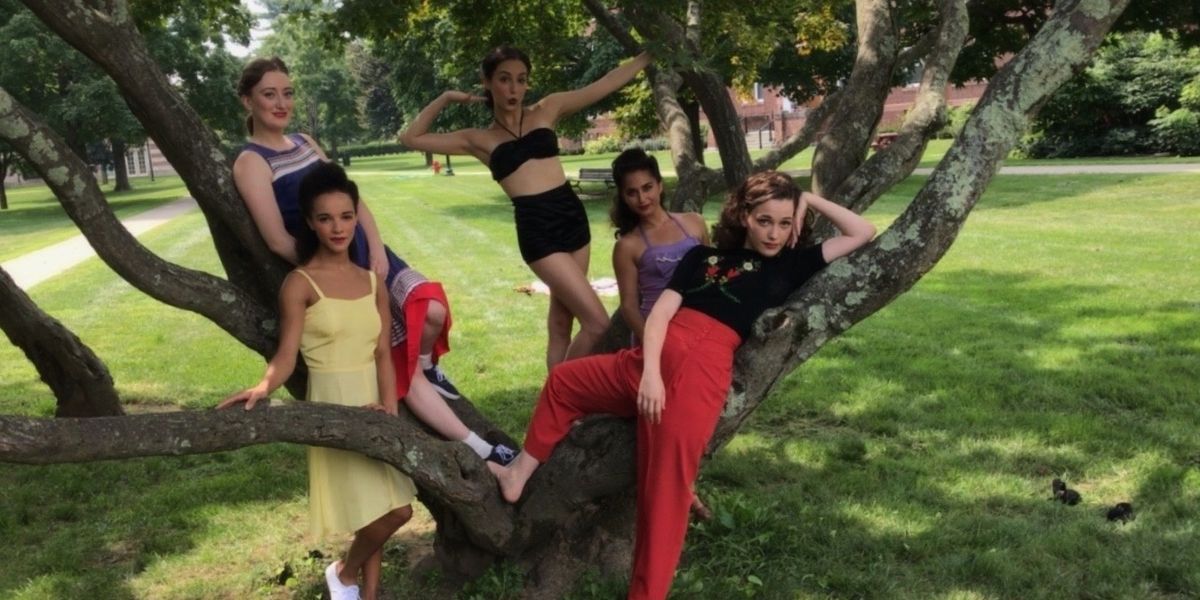My Experience Behind The Scenes on the New Thriller Shirley
In the new film Shirley, Elisabeth Moss stars as Shirley Jackson, the horror writer who rose to fame with her 1948 short story “The Lottery.” The controversial hit led to the most mail The New Yorker had ever received about a work of fiction. Jackson went on to write hundreds more short stories and numerous books, including The Haunting of Hill House, which was adapted into a Netflix series in 2018.
In the film, a young couple moves in with Jackson and her philandering husband, a professor at Bennington College. Shirley initially resents this intrusion, and the ensuing drama inspires her next novel. Like one of her stories, the movie is a psychological thriller, where the line between imagination and reality is blurred.
“About six weeks to a month before we shot, Josephine sent me a storyboard and a whole lookbook. I found that really inspiring because I often struggle, in my own work, to communicate all my ideas. I thought, why don’t I make lookbooks?” Driscoll said in a recent conversation.
After rehearsal, we headed to a hotel for the night. As a concert dancer, even this indie film felt lavish to me: All our meals were provided and we each got our own hotel room. The next morning we were up early to head back to set for hair and makeup. This was a long process, but watching the hair and makeup team get everyone into 1940s glam was one of my favorite parts of the experience.
The costume team sourced almost all the clothing from vintage stores, so most of what we were wearing was completely authentic to the time period. We were included in the crowd scenes, which showed students coming and going from class, as well as a few others, so we changed between different costumes throughout the day, sneaking in extra rehearsal time here and there.
To help direct movement in certain parts of the film, including crowd scenes and an eerie dream sequence, director Josephine Decker brought on choreographer Faye Driscoll, who has choreographed extensively for theater and film in addition to her own performance work. Driscoll also worked with Decker on the acclaimed indie film Madeline’s Madeline.
At the last minute, the production team decided to cast dancers for a few scenes. I was one of them, and the whirlwind experience was my first commercial gig. I answered a casting call on a Tuesday, and by Friday I was in a van being driven to Vassar College in Poughkeepsie, New York, where Shirley was filming on location. There were three other dancers—Tara Sheena, Lyric Danae, and Allegra Herman. We had just one afternoon to rehearse our main scene, which was shot the next day.
Our dance scene was the dream sequence, where we appeared alongside actress Victoria Pedretti, whose character is something of a temptress. As we dove into our rapid rehearsal process, Driscoll started by showing us a collection of images she and Decker had compiled to inspire the scene, ranging from sexy to grotesque.
By the time we got to our dance scene, the sun had gone down. We were working in and around a large tree, and the crew had set up a single massive light to illuminate the area. It was late in the day and everyone had been working since early that morning. We were told, basically, to just go for it. We performed several different movement sequences that Driscoll had put together, with the camera rolling the whole time.
“Those days there were like tech, dress, and a show, but with no catharsis,” says Driscoll. “I love working in film, but so much of it really is delayed gratification.”
With no real-time feedback, it’s hard to tell whether what you’re doing is working or not—but the crew and other actors on set were enthusiastic. “I remember people being so blown away, which was so interesting, because that wasn’t something I would put on stage. But it was nice to see, because as dancers we labor and labor away for the people who love this thing that we do. And that’s part of what is so valuable, that we have this community. But to get to do something like this that was a little bit weird, and a little bit outside the mainstream, it gives us a boost,” says Driscoll.
Of course, we left the set knowing that everything we did could end up being cut from the film. This is partly true: Driscoll says that only a small snippet made it in. But even that little bit, as well as her work directing the movement of bodies in other scenes, shows how a dancer’s perspective can enrich film.
“So many people are really not in their bodies, and that’s surprising to dancers,” says Driscoll. “A little bit of the information we have can go a long way.”
You don’t have to wait for theaters to reopen to see the movie—Shirley is available on Hulu and on-demand platforms like iTunes and Amazon Prime starting today.




